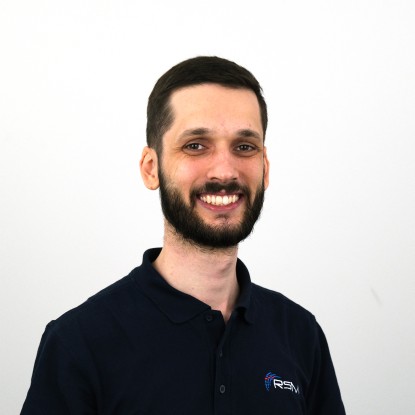M.Sc. Riccardo Bono
Arbeitsgebiet(e)
Kontakt
riccardo.bono@tu-...
work +49 6151 16-28924
fax +49 6151 16-28900
Work
L6|01 108
Otto-Berndt-Str. 3
64287
Darmstadt
- Automotive Catalysis
- Reactor Modelling (Cu-SCR Kinetic Modelling)
- Heterogeneous Catalysis
To meet the current and future restrictions on automotive emissions (e.g., Euro VI), the development of more efficient catalysts – in the form of channeled, coated monoliths – has become of great relevance, especially for the heavy-duty vehicles (e.g., trucks, heavy equipment, ships). In the last decades, the role of mathematical catalytic models has become more relevant as a support to catalyst development. Among the different units a Diesel after-treatment system is made of, the one tasked to reduce the harmful nitrogen oxides (NOx) to N2 is generally the Selective Catalytic Reduction (SCR) unit. To catalyse the reactions, a Cu-zeolite system is often used. Because a zeolite is used as a support, the system structure is rather unique for a heterogeneous catalyst. The small pore size of the zeolites, together with the isolated-ion form of the metal, makes the modelling challenging. For this reason, despite being a technology that has been known for decades, the detailed reaction mechanism of Cu-based SCR under operative conditions is still under debate. Many different insights and proposals for the reaction mechanisms have been provided – especially in the last 5 years – but many relevant points are still unclear. The effect of Cu site distribution and coordination with the zeolite, as well as the storage of species such as NH3, NO and NO2, or the effect of formulation on the reaction mechanism are part of the key points that need better understanding.
In our work, we investigate the reaction mechanism of Cu-CHA systems for SCR applications, combining kinetic modelling and bench experiments, which can reproduce ideal and realistic conditions, in an automotive application. The goal is to develop kinetic models which accounts for the main reaction paths, according both to theoretical and experimental findings, to be implemented in a complete monolith model, suitable for real-life applications.
Our experiments are carried out in fully automated, synthetic gas benches (or SGB), which allows testing the activity of the catalyst in the final monolith form. The high level of automation allows great flexibility in exposing the catalyst to different specific conditions, from different temperatures to different gas compositions and flow rates, in both steady-state and dynamic conditions. In this way, we can run conditions that range from highly ideal (e.g., for model development) to very realistic (e.g., to validate the model in real-case scenarios).






